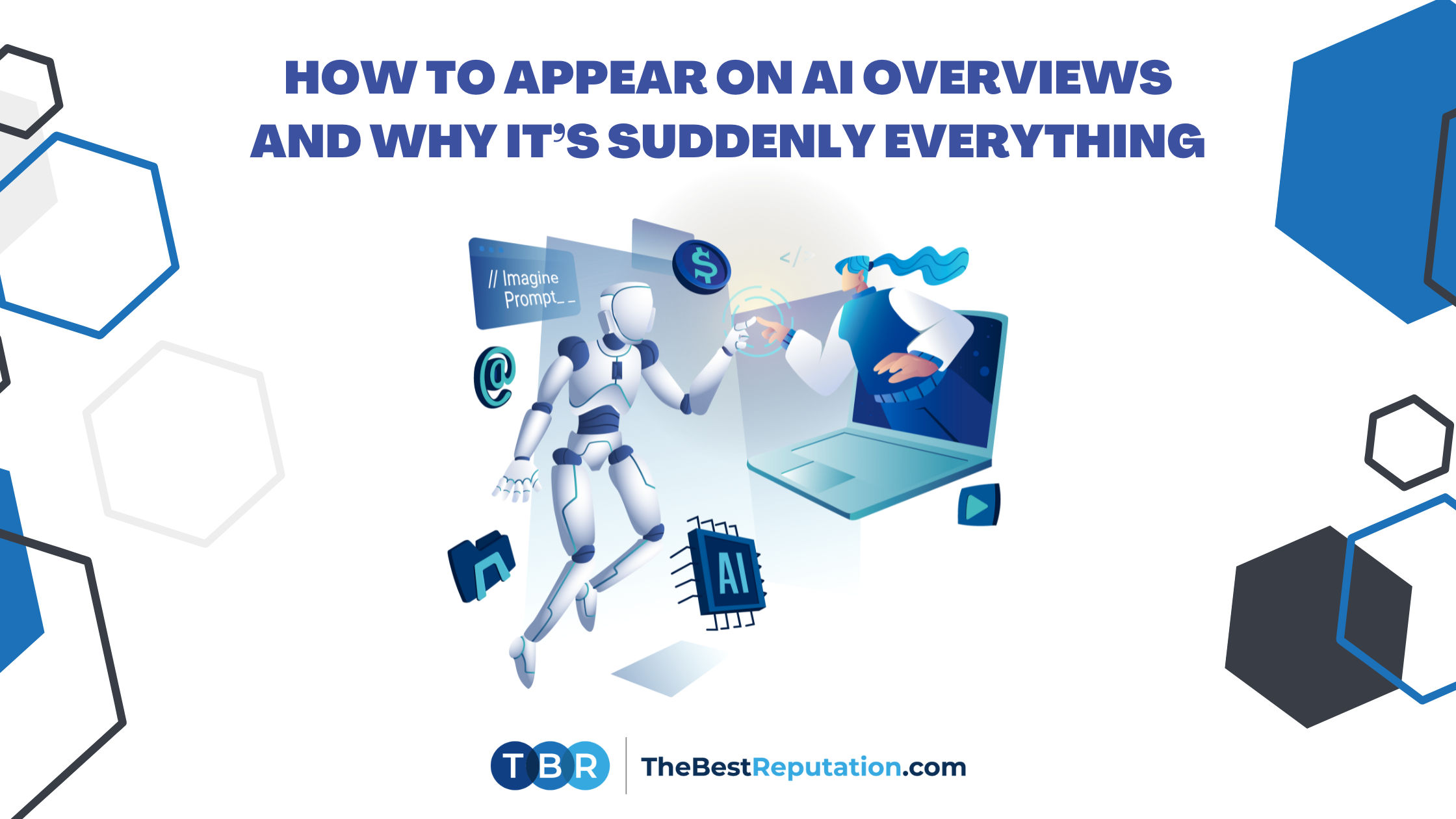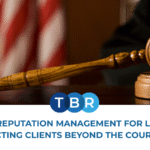How to Appear on AI Overviews — and Why It’s Suddenly Everything

These days, a question keeps coming up in boardrooms, brainstorms, and brand strategy sessions: “How do we appear on AI Overviews?”
As tools like Google’s AI Overviews, ChatGPT, Perplexity, and Bing Copilot become the default way people search for information, the digital landscape is shifting fast—and permanently. Forget scrolling through a wall of blue links. Users now get AI-generated summaries front and center. Often, that’s all they see.
This shift brings both risk and opportunity. If AI pulls from outdated or negative sources, your brand’s image can take a hit—sometimes without you even knowing. But if you’re proactive and strategic, these same AI overviews can boost your authority and visibility like never before.
At TheBestReputation (TBR), we specialize in helping businesses appear on AI platforms in ways that work for them, not against them. We’ve developed a proven framework that ensures the story AI tells about you is one you’d actually want people to hear.
Why AI Overviews Are the New Front Page
This isn’t a prediction—it’s already happening.
- As of March 2025, AI Overviews now appear in 13% of all Google searches in the U.S. (up from just 6% two months earlier), according to Semrush.
- Searches for the term “AI Overviews” have exploded by over 9,800% in the past year alone (Exploding Topics).
- Google says these AI summaries now reach over 1.5 billion users every month across 140+ countries (Investors.com).
So, what does that mean for your brand?
It means that AI summaries aren’t just summaries—they’re your first impression. Sometimes, they’re the only impression. And according to Xponent21, this represents a huge SEO shift:
It’s not just about ranking anymore—it’s about how you appear on AI.
The Double-Edged Sword of AI Visibility
The Risks Are Real
AI doesn’t always get it right—and when it gets it wrong, it can seriously damage your reputation.
- It may surface negative press or long-forgotten content from years ago.
- Misquotes and hallucinations aren’t uncommon, especially with LLMs still evolving. Some businesses have already seen customer trust drop due to misinformation in AI snippets.
- If you’re not actively managing your digital footprint, someone else—or something else—is writing your narrative.
But the Upside Is Massive
Now for the good news: when you get it right, appearing in AI overviews can be a brand-defining advantage.
- Visibility in AI search snippets can position you as an instant authority.
- A Semrush study projects that AI-based traffic will be 4.4x more valuable than traditional organic traffic by 2028.
- Controlling how you appear on AI platforms can mean owning your story, at scale.
What the Data—and the Experts—Are Telling Us
Industry analysts and SEO strategists are already seeing patterns in how AI tools source their information:
- Quora is currently the #1 source cited in Google AI Overviews, beating out even Wikipedia, according to Semrush.
- Platforms like Reddit and YouTube rank high, too, largely because of their conversational and high-engagement content (Mindbees).
- A new approach called Generative Engine Optimization (GEO) is emerging, where the goal isn’t just to rank—it’s to be picked up by AI in the first place.
The takeaway here? These systems aren’t arbitrary. They follow patterns. And if you know how to feed them the right signals, you can reliably increase your chances of showing up in AI summaries—in a way that puts your best foot forward.
How TBR Helps You Appear on AI—The Right Way
At TheBestReputation, we’ve created a system that aligns SEO, PR, and AI strategy to help you actually show up where it counts.
Here’s how we do it:
1. We Get You Featured Where AI Looks First
Our team places content on platforms that LLMs are known to prioritize—Quora threads, Reddit conversations, trusted blogs, and high-authority media outlets. These citations feed directly into the “knowledge” that tools like Google SGE or ChatGPT use.
2. We Format for AI, Not Just Humans
We create content that’s easy for AI systems to process and extract—think FAQ-style articles, semantic headers, and structured data markup. This isn’t about gaming the system—it’s about giving AI exactly what it’s already trying to find.
3. We Shape the Narrative (and Bury the Rest)
If negative or outdated information is ranking or getting surfaced, we build stronger, more credible alternatives to suppress it. AI is heavily influenced by domain authority—so we make sure your side of the story comes from sources that carry weight.
4. We Track How You Appear on AI
Using tools like Semrush Enterprise AIO, we monitor AI mentions of your brand across search engines and platforms. If something’s off—or slipping—we act fast to course correct.
Bottom line: Our approach combines modern reputation management with next-generation AI visibility tactics. It’s not just PR anymore. It’s how you appear on AI—and how that appearance defines your brand in real time.
Why Every Business Needs to Start Thinking About AI Reputation
Whether it’s a customer, investor, journalist, or potential hire, there’s a good chance the next person looking you up won’t read your full website, let alone a 1,500-word review.
They’ll read one thing: An AI overview.
And that one summary might shape their perception permanently.
So ask yourself:
Do you know what AI is saying about you right now?
And more importantly, do you like the story it’s telling?
At TBR, we help brands make sure the answer is yes. Our clients don’t leave their digital reputations to chance—they manage how they appear on AI, on purpose.
Final Thoughts: AI Isn’t the Future—It’s the Now
We’re past the point of speculation. AI summaries are already shaping how people see you online. And whether you’re being misrepresented, misunderstood, or simply missed altogether, the risks of doing nothing are too high.
But with the right strategy in place? You can leverage these AI platforms to amplify your biggest brand.
If you’re ready to own your AI narrative instead of being shaped by it, reach out to TBR. We’ll help you appear on AI with intention, authority, and trust.

